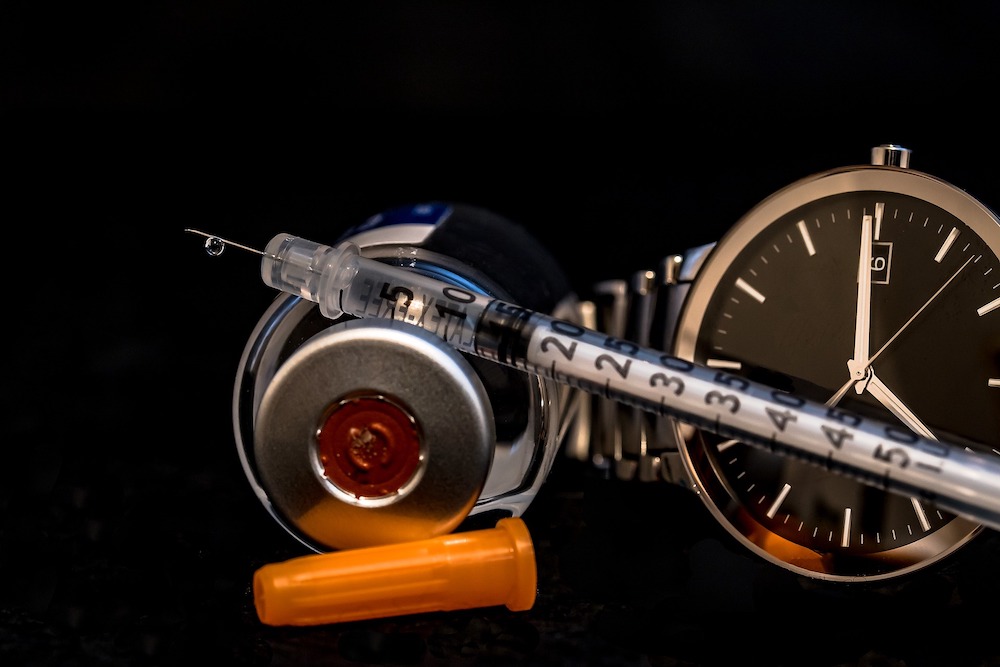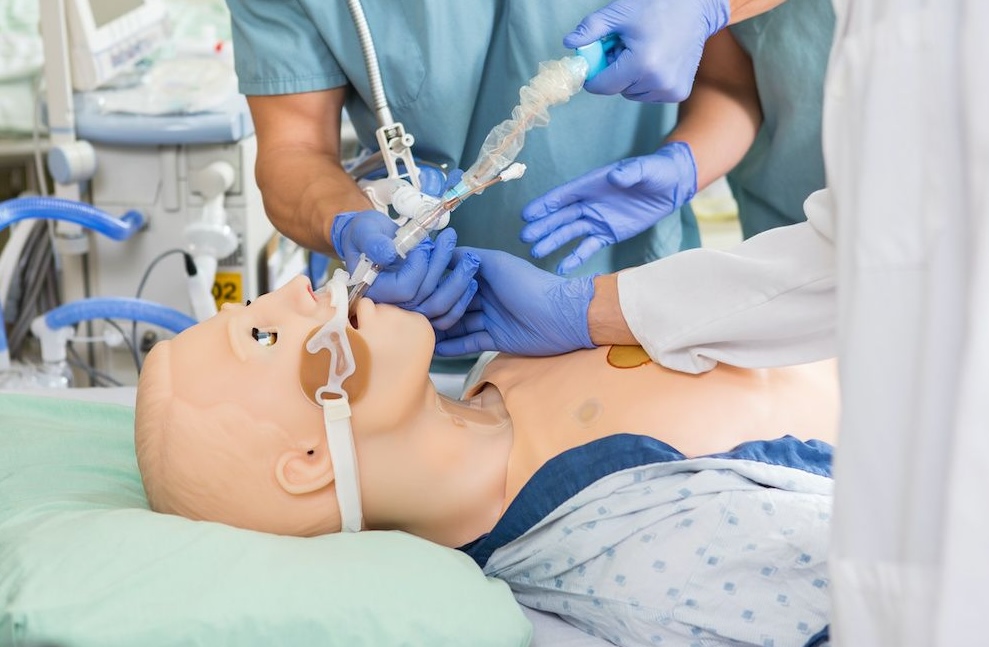Although simulation in healthcare incorporates knowledge from many disciplines, perhaps the most pervasive information comes from physiology. Some simulation team members may have a limited background in physiology or medicine. An understanding of basic physiological concepts can enable non medical simulationists to better understand medical simulation. This article is part of a series of posts related to physiology of diabetes. Diabetic patients are prone to fluctuating blood sugars which must be treated promptly in order to prevent serious consequences. The management of high blood sugars (hyperglycemia) varies according to a number of factors such as age of patient, type of diabetes, current medical situation, motivation of patient, ability to self manage blood sugar levels, risk for low blood sugars (hypoglycemia) and the value of the hyperglycemia.
Part 4C today follows our “Physiology:The Force Behind Simulation, A Guide for Techs” Series, with all parts linked below.
Simulations involving changes in blood sugar levels of the hospitalized patient create wonderful scenarios for learners.
- Learners should first make a thorough patient assessment including physical condition, history, current medications and labs.
- Once all the relative data has been assessed the learner must determine appropriate interventions.
- Scenarios can be created for learners at different levels. For example, for novice learners, routine blood sugar testing before meals and at bedtime accompanied by appropriate insulin administration is a good place to start.
- Patient education and helping newly diagnosed patients face the onset of a chronic disease creates a challenging scenario for learners.
- Scenarios can incorporate children and teens as patients. Learners must use appropriate teaching strategies for all development levels as well as parents or significant others.
- Sudden drops in blood glucose (hypoglycemia) or medical emergencies such as diabetic ketoacidosis make challenging scenarios for the more advanced learner.
- Communication objectives may be incorporated into scenarios if desired.
Main types of insulin secreted by the body.
- Prandial or short acting insulin
- In the healthy body, following a meal, insulin is secreted from the pancreas in response to rising blood sugars. Insulin opens channels in muscle cell walls and allows glucose to enter cells. Excess glucose is stored in the liver.
- Gradually blood sugar levels return to normal values. Insulin is secreted following every meal.
- Long acting or basal insulin.
- Controls glucose between meals
- Insulin is measured in units.
- Blood glucose in the USA is measure in mg/dL (Canada and UK: mmol/L)
- Normal fasting blood sugar <100mg/dL
Examples of injectable insulins:
| Type Insulin | Name | Time to onset of action |
| Rapid-acting | Humalog Novolog Apidra | 10 to 30 min |
| Short-acting | Regular | 30 min to 1 hours |
| Intermediate acting | NPH | 1.5 to 4 hours |
| Long-acting | Lantus Levemir | 0.8 – 4 hours |
Rapid Acting
- Patient must eat immediately following this insulin
- Sometimes given as meal trays arrive.
- Hypoglycemia will follow if no food is given
- Should consider holding dose if patient unable to eat.
- Regular Acting
- Patient must eat within 30 min
- Only insulin that can be added to IV fluids
- NPH can be mixed with regular insulin
- NPH once very common but less used today.
- Long Acting – Typically given once a day in the evening.
- Never mixed with other insulins
- Dispensed in a different shaped bottle – taller and skinnier than shorter acting insulin bottles.
- Total Daily Insulin Requirement –
- Estimating insulin secretion:
- 0.5-1 unit/Kg. E.g. 95 Kg healthy patient secretes around 48 units.
- Note patients with poor kidney function may require less daily insulin.
- An initial estimate for a patient needing insulin replacement would divide the total daily insulin (total daily dose TDD) calculated above into two and give:
- Half the TDD as a long acting insulin (24 units) e.g. Lantus.
- The remaining half divided equally between meals and a bedtime dose and given as a shorter acting insulin e.g. Novolog.
- 6 units before breakfast, lunch, dinner and bedtime (total 24 units)
- Note this is just one example. Endocrinologists may vary the dosage with each meal.
- 0.5-1 unit/Kg. E.g. 95 Kg healthy patient secretes around 48 units.
- If patients have consistently high sugars, larger insulin doses will be given and the distribution between long acting and short acting adjusted to get the blood sugar in the desired range.
- Estimating insulin secretion:
- Correction Insulin (AKA Sliding Scale Insulin).
- In addition to long acting insulin and regularly scheduled prandial insulin, patients may also receive a correction insulin if their preprandial insulins are high.
- Example of an MD order:
- 24 units of Lantus subcutaneous injection daily at 10 pm
- Prandial insulin before meals and at bedtime:
- Breakfast Novolog 6 units subcutaneous injection
- Lunch Novolog 6 units subcutaneous injection
- Dinner Novolog 6 units subcutaneous injection
- Bed time (hour sleep HS) Novolog 6 units subcutaneous injection.
- Correction algorithm for finger stick blood glucose:
- 150-199 mg/dL 2 units Novolog subcutaneous injection
- 200-249 mg/dL 4 units Novolog subcutaneous injection
- 250 – 299 mg/dL 6 units Novolog subcutaneous injection
- >300 mg/dL 8 units Novolog subcutaneous injection – Notify MD.
- Lunch time insulin dose example:
- If the patient’s blood sugar was 244 before lunch, the patient would receive 6 units of regularly scheduled prandial Novolog plus another 4 units Novolog from the sliding scale. Total 10 units of Novolog
- No lantus would be given since lantus is only given once a day at bedtime.
- Note: some patients may have long acting and sliding scale insulins but no prandial insulin.
- Increased Insulin Requirements
- Growth
- Pregnancy
- Food intake
- Stress- surgery, infection, illness
- Some medications – e.g. steroids
- Decreased requirements
- Decreased food intake
- Exercise
- Some medications – e.g. Bactrim
- Insulin is a high risk medication
- Insulin doses are always checked by two nurses.
- Each nurse should calculate the dose against the written orders including the sliding scale. Both nurses should also check the bottle of insulin and the number of units drawn up.
Upcoming articles in this series will include information about treatment for hypoglycemia and how to generate EHR MD order sheets for insulin administration.
N.B. This article is meant to be a primer for people involved in simulation. It is not intended to recommend a treatment regimen for people with diabetes. Please consult with your healthcare practitioner regarding treatment options.
Read the Entire Physiology: The “Force” Behind Healthcare Simulation HealthySimulation.com Article Series:
- Part 1: Blood Pressure
- Part 2: Heart & Respiratory Rate
- Part 3: Pulse Oximetry
- Part 4: Diabetes
- Part 4B: Hypoglycemia & Excel Template for Simulated EHR
- Part 4C: Insulin
- Part 5: Sepsis
- Part 6A: Hypovolemia (Intro)
- Part 6B: Hypovolemia (Treatment & Simulation Tips)
- Part 7A: IV Fluids & Bags
- Part 7B: IV Pumps & Site Access
- Part 7C: PCA for Pain
- Part 8: ABGs
- Part 9: Sepsis Labs
Today’s article was guest authored by Kim Baily PhD, MSN, RN, CNE, Simulation Coordinator for Los Angeles Harbor College. Over the past 15 years Kim has developed and implemented several college simulation programs and currently chairs the Southern California Simulation Collaborative.
Have a story to share with the global healthcare simulation community? Submit your simulation news and resources here!









